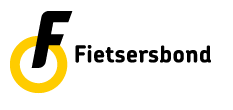Overview of route types
Limited Stops (default)
With limited stops we mean that this route uses cycling paths alongside roads and main cycling routes as much as possible. It also avoids traffic lights when there is a good alternative. Routes of this type are therefore not always the shortest but are relatively quick to cycle. You can easily follow them and the route is relatively easy with minimal turnings. To follow the route you often just have to look at the map.
With this profile you will not encounter obstacles for regular or long bikes.
Shortest Route
The shortest route is the route where you cover the shortest distance. In built-up areas, the shortest route is often not the best route, using many turns, and many obstacles, small streets and alleys and you will often have to use residential streets in place of bike paths. Outside built-up areas, it can sometimes send you over roads with lots of traffic.
Racer Route
The racer route uses roads with a good surface, preferably asphalt. It avoids narrow, crushed shell paths, and doesn't use unpaved roads. The route prefers roads with a more or less recreational character and roads outside urban areas. In this route you will find no obstacles for normal, long and wide bicycles.
Recreational Route
Recreational routes lead you to paths and roads that are 'beautiful'. In our planner, beautiful means a balanced mix of nature, beautiful scenery, with picturesque and unique views typical of the area (even in urban areas e.g. pleasant architecture). The route is often low-traffic and can sometimes coincide with LF routes or numbered junction routes, but can leave these routes just as easily.
Scenic Route
The scenic route stays as much as possible outside urban areas. Outside "untouched" nature areas it will lead you as much as possible along open countryside, and within urban areas through parks or via bike paths or roads with lots of green and few cars.
Car-restricted Route
The car-restricted route aims to reduce the cyclists exposure to road traffic and its attendant noise and pollution. This profile makes maximum use of separated cycle paths, roads that are quiet, and bike paths that are not right next to busy roads. Also you'll see fewer traffic lights because traffic lights are usually at intersections with heavy traffic.
Junction Network
Every region in the Netherlands has a comprehensive network of signposted cycle junctions called fietsknooppunten, marked with round green and white signs with one or two digit numbers. For visitors to the area, this is the easiest way to navigate around on short or long cycle trips. At many junctions there are map boards so maps do not need to be carried by the cyclist. This profile makes maximum use of the Junction Network and otherwise uses the Limited Stops profile.
LF-Routes
LF-Routes are the long distance National Cycle Routes which cross the whole of the Netherlands from one side to another and from end to end. The LF-routes provide probably the best overall combination of path surface quality, signposting, scenery and separation from cars but they consequently attract the largest amount of recreational cycle traffic (including pelatons of racers training at speed near urban areas).
This profile uses the LF network, unless you specify route points that are not on the LF network. Outside the LF network, the route uses the numbered junction network and then the limited stops profile.
Combined Networks (Combinatie fietsnetwerken)
This route profile uses both the numbered junction network, as well as the LF routes.
Advanced
Here you can create your own route profile. This allows further fine tuning of your route preferences. Of particular interest is the avoidance of obstacles for wide bikes (e.g. wide trailers or tricycles) and/ or long bikes (e.g. tandems). The most common serious obstacles for large bikes are slalom barriers (designed to slow cyclists to slower than walking pace and often located just prior to a cycle path encountering a dangerous T-junction with limited visibility) and field gates (for access to cycle paths across fields containing livestock). Also note you can indicate your preferences to reduce the number of cobblestoned (kinderkopjes) or brick roads (klinkers) or increase the amount of street lighting if cycling at night.

